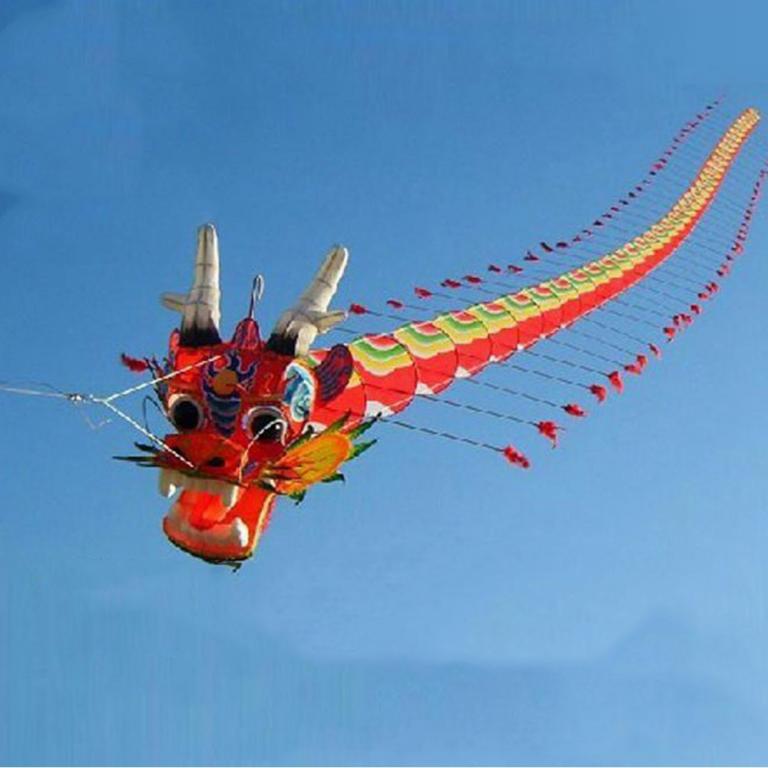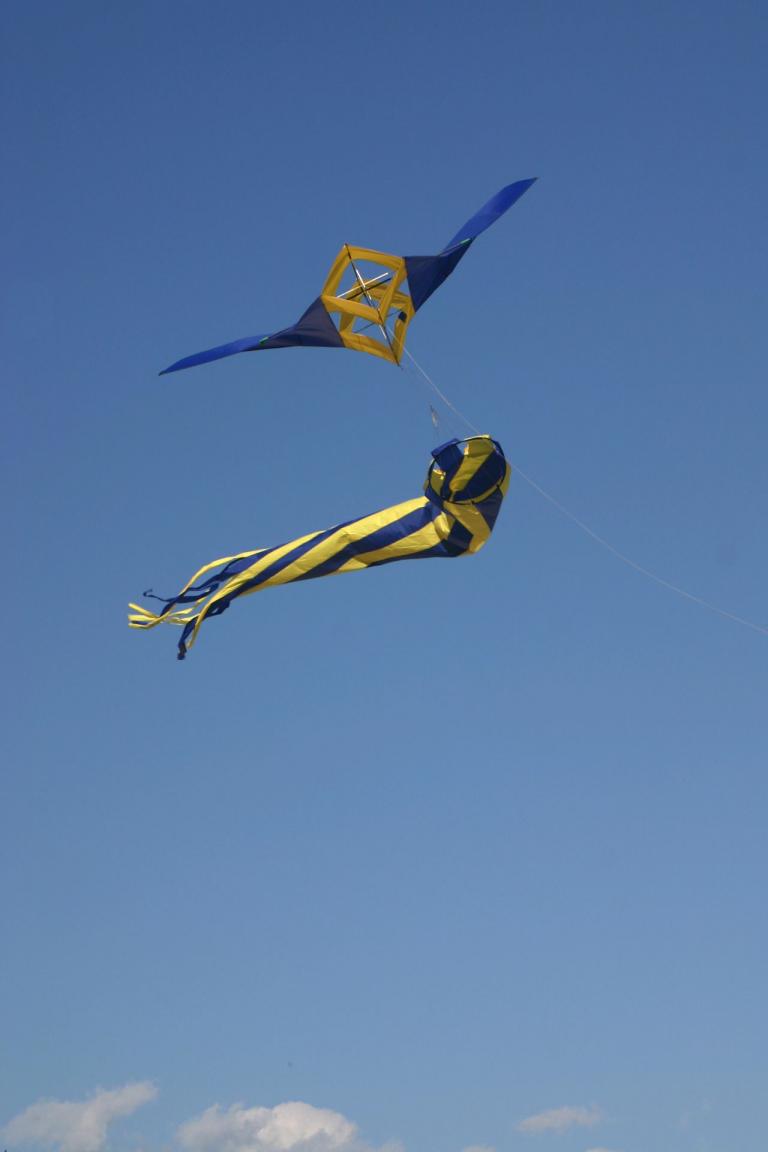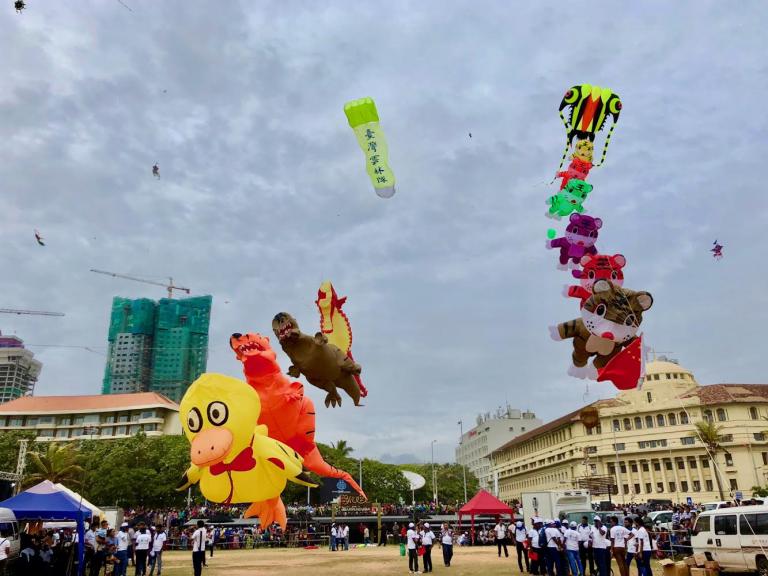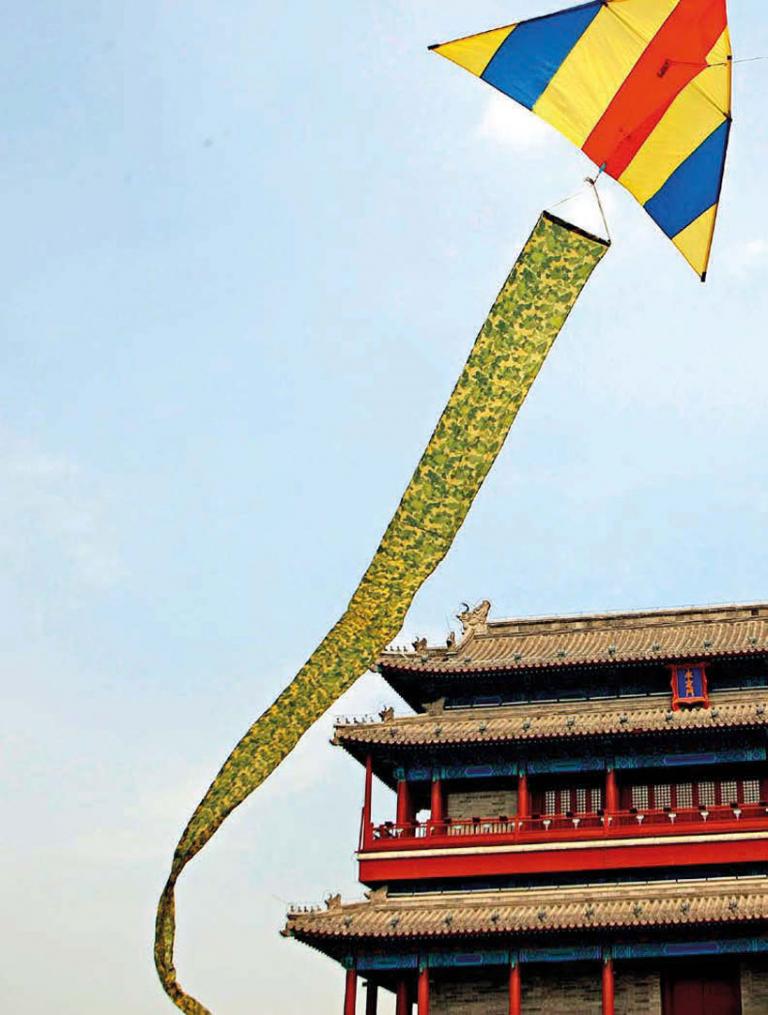Chinese Kites
7 min readAs Tomb-sWeeping Festival is around the corner,the streets are full of hustle and bustle of visitors the scenery is beautiful;people are in laughter kites are being made for spring outing.Flying kite is an important part of the traditional outdoor activities during the period of Tomb-sweeping festival.In the past,if someone suffered from calamities or illness,he/she would write his/her name on a kite.after the kite flied highin the sky,he/she would cut off the string,letting it fly away together with bad luck,in the hope of having good luck

Kites had many names in ancient China,like zhiyuan”(paper eagle),Zhiyao(paper harrier),and”zhiya”(paper crow).For war purpose,ancient Chinese made big wooden kites resembling birds,called”muyuan”(wooden eagle),which can fly in the sky for a while. There was”muyuan”made by Mo-tse and craftsman Gongsu Pan recorded in the pre-Qin book. And later, there are legends about “zhiyuan”made by Han Xin(senior general of later Qin dynasty and early han dynasty). At present, the relatively reliable opinion is that kites originate from the “zhiyao Zhichi”of the Northern and Southern Dynasties. The early kites weren ‘t toys. Instead, they were mostly used for military, communication, measurement and publicity, and even the offensive weapons containing gunpowder
It was not until the Five Dynasties that the kite became a toy for entertainment popular among the folks In the mid Tang Dynasty, a stable and prosperous period the kite switched its function to recreation, but with a smaller size. The popularization of paper technology in Tang Dynasty helped to accelerate the application of paper in daily life, and also simplified the craftsmanship of kites to a large extent, for the cheap and tine paper replaced other expensive slim materials. With the rise of traditiond eap Tomb-sWeeping Day, activities like fire forbidding, tomb sweeping, swinging, playing Cuju, playing polo and interposing willow twigs prevailed in both the court and the commonalty. Flying”zhiyuan “began popular among children By then, the craftsmanship and flying effect of “zhiyuan “were at a high level By the Song Dynasty, kites were ubiquitous. Kite making became a trade, and salesbusiness emerged accordingly. The custom of flying kites during the Tomb-sweepingDay period gradually formed. Flying kites has already been recorded in the famous drawing Riverside Scene at Qingming Festival (Tomb-sWeeping Day) of the well known artist Zhang Zeduan and Baizi picture(picture of a hundred children) of Su Hanchen in Northern Song Dynasty. In the Southern Song Dynasty, flying kites was an essential part for celebrating festivals in both the court and the commonalty. Besides kites sold as commodity there were also kite artists competing to survive in thewazi(large-scaled entertainment venue for the folks

The kite trade saw its heyday in Ming and Qing dynasties, when kites became ubiquitous and children competing with each other to fly kites were quite a spectacle in spring. The high ranking officials and nobles liked flying kites, too. Three big kites of the Last Emperor Pu Yi (1906-1967) are still collected in the Imperial Palace now. Ming and Qing dynasties witnessed great improvement in shape, structure, style, paper binding technology decorating and flying skills of kites. The records of Kites in the South and north (or Nan Yao Bei yuan Kao gong Zhi) written by Cao Xueqin(1715-763), a famous litterateur in late Qing Dynasty, contains mainly formulas in verse on making and painting kites and colorful kite pictures of various types Based on the custom, aesthetic habits of Beijing people and the special court environment, the school of Beijing court kites represented by Cao Xueqin, Jin Fuzhong and Ha guoliang had gradually formed
At the end of the Qing Dynasty,traditional Chinese kites enjoyed a big progress in contents and themes.Innovatively designed character-shaped kites emerged in Beijing and red-crowned crane and boy-shaped,Leizhenzi-shaped(a flying hero in the Investiture of the Gods),flock-shaped and apricot blossom-shaped kites in otherplaces in succession.According to the tradition of”worshiping Loong”artists inWeixian County of Shandong combined the image of Loong in the New Year pictures,embroideries and other folk arts,innovated the old centipede-shaped kites,changing the head of centipede to be that of Loong, to create the new Loong-head centipede shaped kite tying 2008
As commercial cities emerged in the 19 century, kites as folk crafts enjoyed a good market. There were lots of types of kites, rich in content, colors and rural flavor In Tianjin where ports were opened earlier than many other places, the folk kites were exquisite, lifelike and had unique colors. Craftsmanship of kites includes overall design, separated making, tenoning paper with bamboo splint, and connecting paper with copper hoop. then even kites of tens of meters can be disassembled, and folded to be a small item which could be contained in a paper bag or a box, convenient for carrying Kites embodying the ingenuity of the artists like”huoyanying”(living-eye eagle) and”luoguyan”(swallow playing gongs and drums) are honored as the nonsuch in Tianjin
Influenced by the New culture movement (around the time of the ay qt Movement in 1919), kites during the republic of China(1912-1949 ) were made based on the New Yew pictures, embroideries, toys, sculptures and operas, featuring rich contents and various types And majoring in kite making became a family sideline Artists of crafts and Chinese painting participated in making and painting kites, andpainting style of exact delineation and enriched colors of scholars and that of folks coexisted, making the kite an artwork suitable for being hung on the wall for appreciation. At the 1915 Panama Pacific International Exposition, the kite of Beijing artist Ha Changying and that of Tianjin artist Wei Yuantai won the gold award and silver award, respectively
Kite making process mainly consists of binding, pasting, painting, and drying Raw materials are generally bamboo, paper, and silk. During Ming and Qing dynasties, in addition to being more delicate kites were developed to be realistic-style shaped kites Shaped kites have strict requirements for the binding and making techniques apart from the equilibrium principle to be followed, the aerodynamic principles should also be considered to let kites fly high and make beautiful movements. For example, the centipede shaped kite can hold its head high in the air, the double butterfly shaped kite can fly right, left, upwards and downwards the eagle shaped kite can hover in the sky and the big board snipe shaped kite can stay steadily in a place. the workshop of New Year pictures even printed kites with woodblocks, and artists decorated kites by pasting stickers and adding paper flowers onto the kite, making paper embossment, cutting paper, and tracing the line in gold and silver As the artworks suit both refined and popular tastes and after many generations of development, there are a great variety of kites. By function, there are toy kites, ornamental kites, stunt kites, and pragmatic kites; by structure, there are hard-wing soft-Wing, board, string-like, barrel-shaped half-skeleton kites, and soft kites; by shape and theme, there are bird-shaped insect-shaped, aquatic-shaped, man-shaped character-shaped kites vessel-shaped and geometric figure-shaped kites etc Hard-wing kites are of a common type. The wings, framed by bamboo splints and connected to the body, cannot be folded and disassembled, represented by the bank swallow”kites in Beijing. Wings of Bank Swallow”kites are framed by two bamboo splints, one on the up side and the other on the lower side, the head and belly a long bamboo splint doubling up, and the tail two bamboo splints crossing. Those components bound together compose the framework of the kite in a fixed proportion Being easy to make, stable and well-adapted, hard-wing kites are warmly accepted by the folks

Board kites are like a flat plate, such as the facial mask-shaped, vessel-shaped and cicada-shaped kites The most typical one is the traditional Eight Diagrams”shaped kite, the outline border comprising two squares made of bamboo splints, and the intussusception part is an octagon consolidated with a cross in it. It is octagon as hole, and can only fly against strong wind. Board kites are expressive and well adapted. They are able to present various utensils, characters, and geometric figures Tile kites are commonly known as the ass curtain, framed with three bamboo splints, including two crossing on the square paper and another held horizontally on are the most common self-made ones among the folk ower end are the tail tile kites the top to form a bow. Three paper belts added to the le There are kite making centers in every place in China, with famous kite makingareas including Beijing, Tianjin, Weifang of Shandong, Nantong of Jiangsu, and Chengdu of Sichuan. Beijing kites, dignified and gracefuL, neat and orderly, fall into Haishi, Jinshi, Caoshi schools, and representative contemporary artists are ha Yiqi and Kong Xiangze Tianjin kites, referring to Yangliuqing New Year pictures, are beautifu and vivid in shapes, figures and colors. Representative artists are Wei Yuantai and Zhou Shutang. Weifang of Shandong, honored as the “Kite Capital of the World, “ha a long kite making history and multiple kite schools. Kites in Weifang fall into three structures-flat, embossed, and three-dimensional Adopting elements of Yangjiabu New Year pictures, they are exquisite, bright-colored and rough -lined. Kites made in Nantong of Jiangsu are distinguished with their sound. Equipped with different kinds of whistles making both high and low pitches, they will perform a “midair symphonywhen flying in the sky. Main varieties are “banyao”(board snipe) and “huoyao”(live snipe), and representative artists Guo Chengy, Gao Huanwen and Gao Zexian. Besides, flying kites was listed into an athletic competition by the State Physical Culture and Sports Commission of China in 1988, further driving the popularization and development of flying kites among the folks
From Tang and Song dynasties, Chinese kites have spread overseas, to Korea, Japan, Malaysia, and then to Europe and america. during the industrial Revolution kites were developed towards aircrafts in Europe. As a board in the National Air and Space Museum in Washington reads: The earliest aircraft is Chinese kites and rocket









